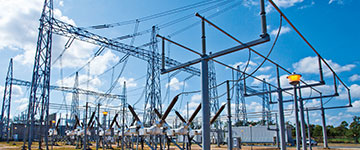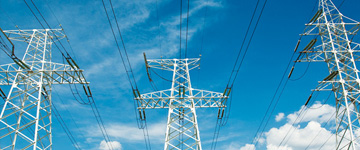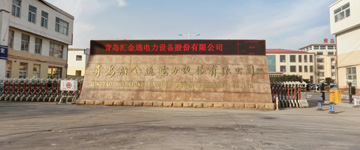Polaris Star Power Sales News: On June 18, the General Institute of Electric Power Planning and Design held a conference of China Electric Power Development Report 2018 (hereinafter referred to as "Report") in Beijing. At the meeting, Du Zhongming, Vice President of the General Institute of Electrical Regulations, made a preliminary study on the future development of China's electric power industry in the next three years. Details are as follows:
Research on Electric Power Development in the Next Three Years
1.In the next three years, high-tech industries and high-end manufacturing industries will continue to drive the rigid growth of electricity consumption in secondary production. The rapid development of service industry will drive the rapid growth of electricity consumption in tertiary production and household life.
In 2019, the electricity consumption of the whole society increased by 5.6% and reached 7.3 trillion kWh; in 2020, the electricity consumption of the whole society increased by 5.0% and reached 7.6 trillion kWh; in 2021, the electricity consumption of the whole society increased by 4.7% and reached 800 million kWh.
2. Overall tightening of the supply and demand situation of electric power throughout the country.
On the premise of full transmission of cross-provincial transmission lines, if the increase of power supply is not considered in time, the situation of power supply and demand in most provinces will be tightened in the next three years. Among them, 16 provinces need to increase power supply and start a batch of pre-work of thermal power projects in time. Eastern, central and southern China need to further expand the scale of external electricity. The report points out that from 2019 to 2021, the situation of power supply and demand in China will be tightened in an all-round way. Considering only the power supply that has been clearly put into operation at present, and on the premise that the power flow arrangement across provinces and regions can be implemented, the power supply and demand in Hebei, Jiangsu, Zhejiang, Anhui, Henan, Hubei, Hunan, Jiangxi, Shaanxi, Guangdong, Guangxi and Hainan will continue to be tight or tense in the next three years. Power supply and demand in Liaoning, Inner Mongolia, Shandong, Shanghai, Fujian, Sichuan, Chongqing, Gansu, Xinjiang, Yunnan and Guizhou will gradually change from loose or basic balance to tight or tense in the next three years; power supply and demand in Heilongjiang, Jilin, Beijing, Tianjin, Shanxi, Ningxia, Qinghai and Tibet will be relatively loose.
3. Vigorously Developing New Energy is still the Focus of Energy Supply Side Reform
New energy absorption and utilization will be the key to guide and optimize the layout of development. In the next three years, there will be about 350 million kilowatts of new energy absorption space in China. There is still great potential for development in the "Three North" region, with about 100 million kilowatts of new energy absorption space.
With the sustained and rapid growth of electricity consumption in Inner Mongolia, Gansu and Xinjiang, the red and orange warning is expected to be lifted in the next three years, and there is still potential for large-scale development according to the requirement of parity.
With the promulgation of the "Renewable Energy Power Acquisition Responsibility Weight" policy ("Quota System"), the urgency of new energy development in the central and eastern region continues to increase; with the introduction of the "Distributed Generation Market Transaction" policy, it is expected that the decentralized wind power and distributed photovoltaic in the central and eastern region will develop rapidly in the next three years.
Under the existing peak shaving capacity and grid conditions, the offshore wind power absorption space in the next three years will be about 19 million kilowatts.
4. Continuous increase of Hydropower Delivery Scale in Southwest China
Southwest hydropower will also add more than 30 million kilowatts of cross-provincial and cross-regional allocation capacity. It is proposed to establish a market-oriented mechanism and gradually adjust the stock hydropower absorption scheme.
5. Utilization rate of cross-provincial transmission channels needs to be improved urgently
Accelerate the construction progress of supporting power supply in Ningdong-Zhejiang, Zhundong-Anhui, Shanghai Miao-Shandong, Jinbei-Jiangsu, Mengxi-Tianjin South, Yuheng-Weifang, Ximeng-Shandong and other transmission channels. Strengthen the construction of receiving end grid, enhance the power transmission capacity of Jiuquan-Hunan, Hami-Zhengzhou transmission channel, improve the market pricing mechanism, and promote the power transmission scale of Zalut-Qingzhou transmission channel as soon as possible. It is estimated that the scale of cross-provincial transmission in China will reach about 290 million kW in 2021.
6. Marketization Reform Needs Further Speed-up and Enlargement
Barriers to electricity market-oriented transactions still exist. It is urgent to establish a cross-provincial transaction mechanism based on the physical connection of power grids to break the barriers to inter-provincial or inter-regional transactions.
The top-level design of spot market has been introduced, but the power spot trading system still needs to be further improved, and the power spot trading simulation and verification system needs to be established urgently.
Incremental distribution network evaluation mechanism has been initially established, and the compilation of relevant planning and design standards has started. However, at present, only 48 business licenses are issued for 320 incremental distribution network projects, and the main position of a large number of incremental distribution network business needs to be clarified urgently.
Preliminary Study on the Development Trend of Electric Power in the Future
1. High-quality economic development injects new momentum into the growth of electricity consumption
At the present stage, China's economy is in the middle and late stages of industrialization and rapid urbanization. However, there is still a gap between China's per capita electricity consumption and other indicators in developed countries. In 2018, China's per capita electricity consumption is about 4,900 kWh, which is only three fifths of Japan's current level and two fifths of the United States' level.
Looking forward to 2035, with the high-quality development of China's economy, especially the innovative development of manufacturing industry, the rapid development of strategic emerging industries such as big data, the continuous improvement of residents' lives, and the substitution of electric vehicles, clean heating and other electric energy will inject new momentum into the growth of electricity consumption. It is estimated that China's total social electricity consumption will be about 12 trillion kWh in 2035, and the per capita electricity consumption will be about 8 500 kWh, slightly exceeding the current level of developed countries in Europe and Japan.
2. New energy development enters a new stage dominated by absorption
With the gradual withdrawal of state financial subsidies, China's new energy will enter a new stage of development of comprehensive non-subsidized parity dominated by consumption.
It is estimated that the total installed capacity of new energy will reach about 1.2 billion kilowatts by 2035, accounting for 32% of the total installed capacity and 15% of the total power generation capacity.
3. New Orientation of Traditional Power Supply by Modern Energy System
Traditional power supply has always been the "ballast stone" to support the safe and stable operation of China's power system. In the future, it will continue to play the basic role of power support and strengthen the underpinning role of energy and power security supply.
Hydropower should optimize the layout of large and medium-sized hydropower development, strictly control the development of small and medium-sized hydropower stations, comprehensively promote the clean development of coal and electricity, further reduce emission levels, enhance peak shaving capacity, implement coal and electricity biomass fuel substitution in conditional areas, and explore the application of carbon capture and storage. And so on technology.
4. Deep changes in the energy pattern have resulted in a new pattern of power resource allocation
In accordance with the principle of respecting history and marketization, it is necessary to gradually optimize and adjust the stock power flow of the Three Gorges, Guizhou and Anhui power transmission from east to east, and to plan the schemes of hydroelectric power transmission and connection in Sichuan and Yunnan in advance.
The comprehensive energy base in the north and hydropower base in the south-west and southeast of Tibet still have potential for development. The central and eastern regions are affected by policy factors such as ecological environment protection and "dual control" of energy, so there is a huge space for power market.
On this basis, a new pattern of power resource allocation will be gradually formed in the future, which will stabilize the transmission of power from west to East and increase the transmission of power from north to south. It is estimated that the national power flow will reach about 400 million kilowatts by 2035.
5. Energy transformation promotes power grid to become a new platform for shared economy
It is difficult to completely change the path dependence of economic development in the short term, and the large power grid relying on large power supply will still play an irreplaceable role as the backbone platform.
With the acceleration of energy transformation, new industries, new formats and new modes will continue to emerge. Distribution network will become an important basic platform for future shared economy.





































